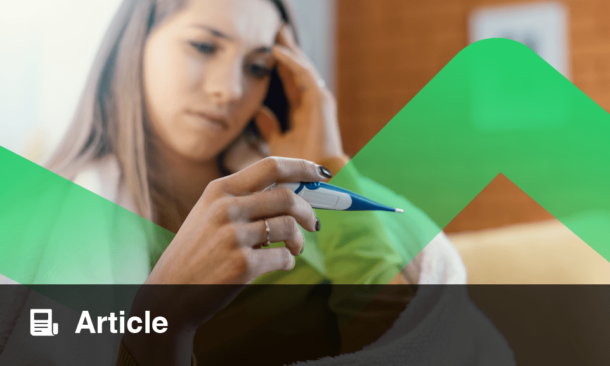THOUSANDS of immunologists, allergists, and clinicians involved in the research and care of allergies were due to come together in the first week of May at ExCel London, London, UK, for the annual congress of the European Academy of Allergy and Clinical Immunology (EAACI). But ExCel had been transformed into a massive intensive care unit, the National Health Service (NHS) Nightingale, and the COVID-19 pandemic meant that this allergy community had to adapt to a new digital format for their congress. Living up to their congress theme of innovation this year, EAACI rapidly adjusted their plans and hosted an impressive digital congress for the first time.
Undaunted by the challenges of their first digital congress, EAACI provided a wide array of session formats to showcase an astounding volume of research and host thoughtful discussions with experts and stakeholders. Poster sessions and abstracts were accompanied by interactive symposia, courses, and ethics, ‘hot topics’, year in review, and ‘pro & con’ sessions. Particularly engaging were many live-hosted sessions, allowing for interaction via an online chat function to facilitate the discussion that would normally occur during a face-to-face congress.
The theme of this year’s congress was ‘bridging innovations into allergy and asthma prevention’ and EAACI President Prof Marek Jutel, Wrocław Medical University, Wrocław, Poland, highlighted the role of this theme in empowering the value of the congress: “This year’s congress motto suggests that we will not only present state-of-the-art knowledge in allergy and clinical immunology but will go beyond this, bridging it with the most contemporary, inspiring, and creative processes and ideas diffused and adapted to the needs of our patients.”
During the welcome message, Nobel Prize Laurate Sir Gregory P. Winter, University of Cambridge, Cambridge, UK, presented the first keynote lecture, in which he discussed the history of biologicals and their place in modern medicine, adding recently learned knowledge about SARS-CoV-2. The second keynote lecture about coronavirus and their influence in lung inflammation was delivered by Prof Peter Openshaw, Imperial College London, London, UK. Finally, Prof Jutel explored the recent data on immune modulation in the era of COVID-19.
This year, Prof Santiago Quirce, Prof George du Toit, Prof Mübeccel Akdis, and Prof José María Olaguibel were respectively awarded the Clemens von Pirquet, Daniel Bovet, Paul Ehrlich, and Charles Blackley awards for their contributions to allergy and immunology. Other allergists honoured at this year’s congress included Dr Rodrigo Jimenez Saiz (Allergopharma Award), Dr Paul Turner (PhARF Award), and Dr Giorgio Walter Canonica, Dr Claudia Traidl-Hoffmann, Dr Sebastian Johnston, and Dr Nikos Papadopoulos (EAACI Fellow Award).
Compelling research presented at the congress included the consideration of the role of allergy in the current COVID-19 pandemic, and in wider clinical fields; the role of air pollution in COVID-19 outcomes; bathing frequency of infants and the risk of atopic dermatitis; and proangiogenic features of B cells that may contribute to cancer and inflammation. Additionally, EAACI launched their guidelines for the use of biologic therapies in asthma at the congress.
EAACI represents over 75 national allergy societies and is made up of more than 12,000 members from 124 countries. Originally founded in 1956, EAACI has grown to become the largest medical association in Europe for the field of allergy and clinical immunology, and celebrates that it is “the primary source of expertise in Europe and worldwide for all aspects of allergy.” For the first digital congress, 5,000 people attended online and built the same collaborative community expected of a face-to-face congress via online chat and Twitter. The congress tradition of a ‘Beat Allergy Run’ shifted online, with participants sharing their progress during the congress from their homes around the world with #VirtualBeatAllergyRun. Prof Jutel celebrated this adaptive community: “Change is not only about embracing new ideas but also about leaving outdated ones behind, and what better opportunity to do so than taking part in this completely new format of annual congress?”
Is Air Pollution Worsening the COVID-19 Pandemic?
NITROGEN dioxide, ozone, and respirable particulate matter (PM), all examples of gases than modify the permeability of airway mucosa, may render individuals more susceptible to severe acute respiratory syndrome coronavirus-2 (SARS-CoV-2). This was announced in a press release on 7th June 2020 at the EAACI Digital Congress 2020.
Exposure to fine PM or ultrafine carbon black particles is known to heighten respiratory virus-induced inflammation, and long-term exposure to such air pollution leads to chronic systemic inflammation. This is thought to be partially caused by a decreased ability of macrophages to phagocytise a virus and thereby produce an ineffective immune response against the infection.
This chronic immune response causes many of the comorbidities that put patients at higher risk of severe COVID-19. However, it was noted by Prof Gennaro D’Amato, University of Naples, Naples, Italy, that the virus, and indeed other respiratory diseases such as chronic obstructive pulmonary disease, could be utilising polluting particles as ‘territories’, whilst also surviving longer in immune environments that are already aggravated by irritants such as air pollution.
Protecting the environment could therefore be imperative in these unprecedented times, highlighted Prof D’Amato: “It is important to consider that these potential correlations can be reduced by reducing deforestation, by reducing old components that increase air pollution and climate change.” These results signify the importance of this topic to all countries, and the planet.
Do Proangiogenic B Cells Play a Role in Cancer and Chronic Inflammation?
ANGIOGENESIS, the formation of new blood vessels, has been shown to play a central role in the pathogenesis of conditions including cancer metastasis and tissue remodelling in chronic inflammation. A new study presented at EAACI Digital Congress 2020 on 6th June has reported the identification of a subset of B cells with angiogenic function.
B cells are primarily known for their role in humoral immunity; however, it is becoming increasingly evident that they also have other functions mediated by the cytokines they produce, which further define the effector function of the immune cell. The process of angiogenesis is governed by a group of proangiogenic mediators including cytokines, chemokines, and growth factors. In the study lead by Dr Willem van de Veen and Prof Mübeccel Akdis, Swiss Institute of Allergy and Asthma Research (SIAF), Davos, Switzerland, a subset of B cells characterised by the production of a broad range of proangiogenic cytokines were identified. The cytokine profile of the cells strongly correlated with B cells that switched to IgG4, known for its anti-inflammatory properties. IgG4 has been reported to be associated with conditions such as melanoma and eosinophilic esophagitis, with enhanced IgG4 response against food allergens reported in the latter. The described B cells expressed increased levels of CD73 and CD49b, which catalyse the conversion of ATP to free adenosine, a known proangiogenic factor.
The proangiogenic B cells were found primarily, and at elevated levels, in the peripheral blood of patients with melanoma and eosinophilic esophagitis, diseases associated with angiogenesis. Furthermore, in these patients, tissue-infiltrating IgG4+, CD49b+, and CD73+ B cells expressing proangiogenic cytokines were also detected.
The discovered proangiogenic B cells, from this study, highlight a previously unidentified subset of cells that may contribute to the pathogenesis of cancer and chronic inflammation through tumour metastasis and tissue remodelling. Future research will aim to investigate the potential clinical strategies of targeted therapies aimed at depletion of B cells in melanoma, eosinophilic esophagitis, and other inflammatory diseases.
Bathing Frequency Impacts the Risk of Atopic Dermatitis in Infants
BATHING of newborns varies in frequency, but according to a study by King’s College London and St. George’s University, both in London, UK, that was presented at EAACI Digital Congress 2020 and highlighted in a press release dated 6th June, an increased frequency of bathing during infancy is associated with an increased risk of developing atopic dermatitis (AD).
Affecting approximately 15–20% of children worldwide, AD is one of the most common inflammatory skin diseases. Symptoms of AD generally present during infancy, with 60% of patients developing them before the age of 1 year. These initial symptoms can evolve into debilitating pruritus (itchiness), sleeplessness, and a severe reduction of quality of life. In addition to established genetic links, an increased risk of AD can be associated with environmental exposures that disrupt the function of the skin barrier.
In the study, healthy infants with no known dietary or health conditions, who were full term, and were exclusively breastfed were assessed. The infants were from across Wales and England and were enrolled in the EAT randomised controlled trial. When the infants were 3 months of age, the parents completed questionnaires that asked how they care for their baby’s skin. The infants’ skin barrier function was measured by assessing transepidermal water loss (TEWL); additionally, the infants were examined for AD.
For each additional bath of the infant, there was an increase in TEWL. Additionally, a bathing frequency of more than once a week was associated with an increase in AD risk at 3 months; however, this was not seen at the 12-month follow-up. These results remained even after adjusting for confounding factors, such as filaggrin mutation status, water hardness, and emollient application.
Overall, the study showed that there was an association between an increase in bathing frequency in infants and an increase in TEWL and risk of AD. Further studies, in the context of an intervention study, on bathing frequency and the overall impact of skin hygiene practices have been called for.
New Guidelines for the Use of Biologicals in Patients with Severe Asthma
NOVEL guidelines for the use of biologicals in patients with severe asthma, which is a rapidly evolving field, were presented at the EAACI Digital Congress this year on 6th June 2020.
Patients, families, and healthcare professionals affected by severe asthma bear a significant burden because of the disease heterogeneity, comorbidities, challenges associated with pathways of care, and the differences in healthcare both nationally and regionally. The management of severe asthma has become well-controlled with better understanding of the disease pathogenesis. The use of biologicals for targeted treatment is supported; however, uncertainties regarding the selection of biologicals remain. Prof Marek Jutel, the President of EAACI, posed some of the key questions about the use of biologicals for the management of severe asthma: “What are the best strategies to enhance the respondent’s rate? What is the optimal duration of treatment and its cost-effectiveness? And, what is the appropriate regimen, in the clinic or home-based?”
The new EAACI guidelines on the use of biologicals in severe asthma follow the GRADE approach to devise biological and asthma outcome recommendations. As well as this tool, a management algorithm for the use of biologicals, future approaches to the field, and research prospects were put forward. Prof Oscar Palomares, Biologicals Guidelines Project Co-Chair, Complutense University of Madrid, Madrid, Spain, commented on the significance of these advancements for “healthcare providers, patients, regulators, and healthcare systems providing specific recommendations for each biological in the context of each independent outcome.”
Modern medicine has seen tremendous advances in the use of biologicals (namely, monoclonal antibodies); the potential that biologicals hold and the associated challenges were raised at the congress by Sir Gregory Paul Winter, special guest and 2018 Nobel Prize Winner for Biochemistry. He shared the side effects of corticosteroids, such as fluid retention, hypertension, and bone loss, and commented on the benefits of monoclonal antibodies: “Ideally, treatments should have a more specific mode of action and avoid these side effects.” He commented further on the potential of biologicals: “These biologicals are of high efficiency and exquisite specificity, they have a long half-life in serum, and properties and functions can be tailored to order. Their impact has already been immense and [are] likely to become greater still.” EAACI hope that the new guidelines will serve as a reference point in the field for the foreseeable future.








